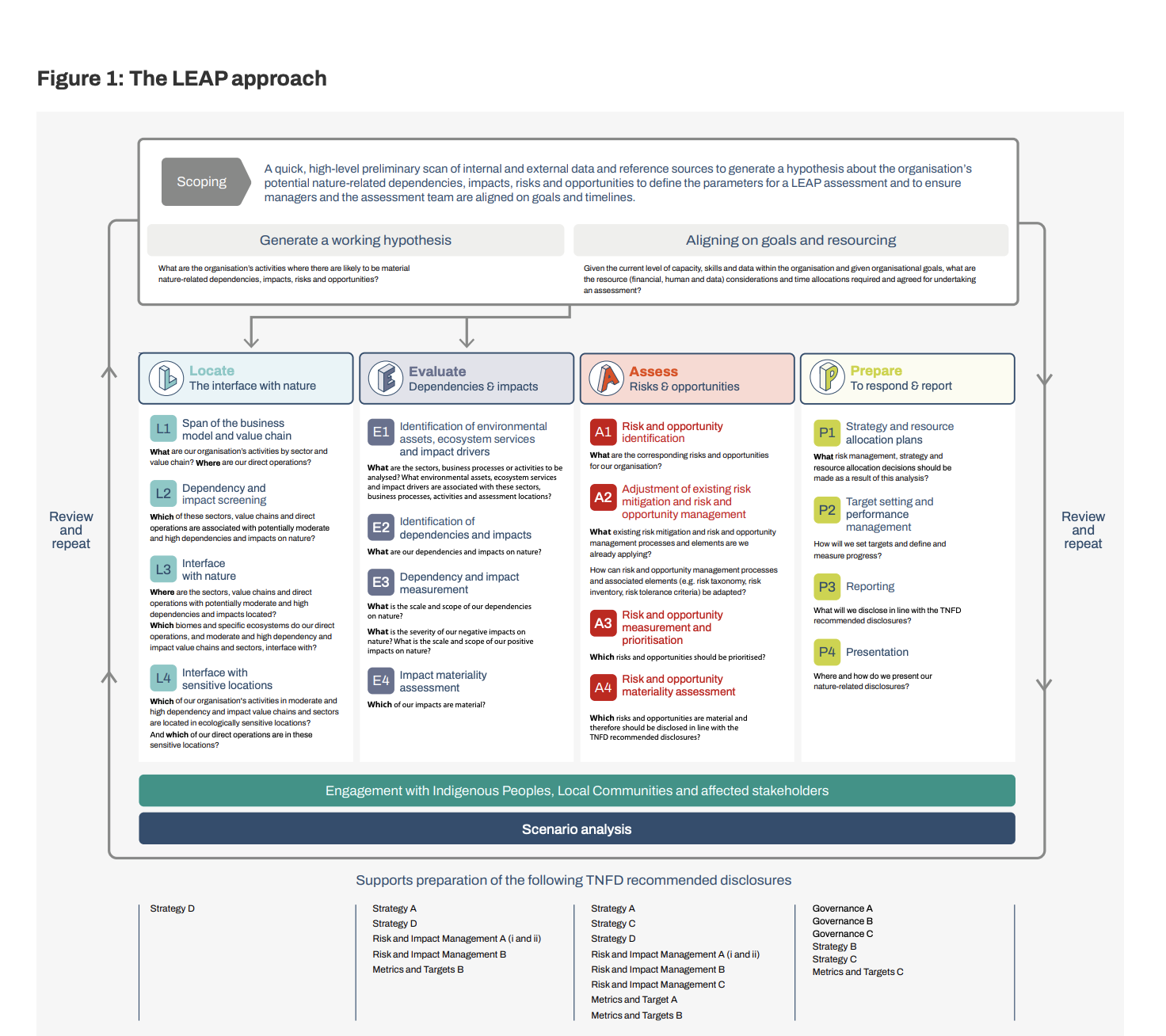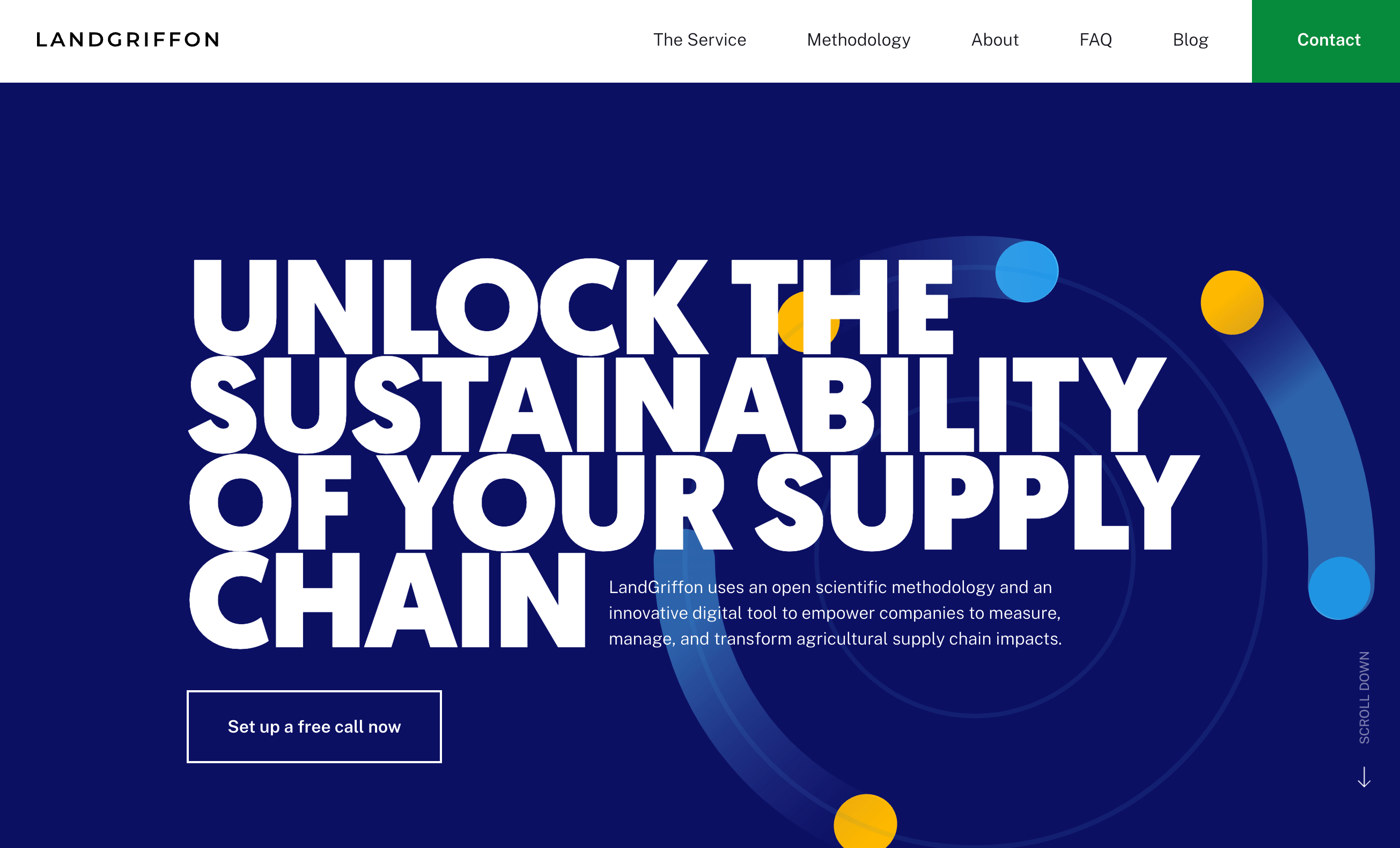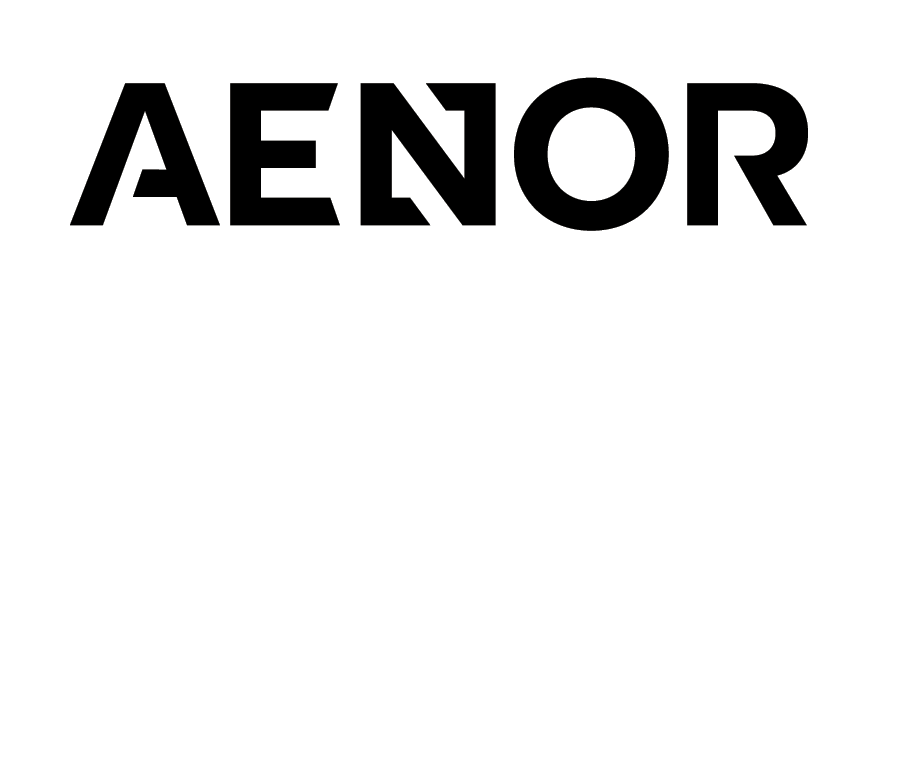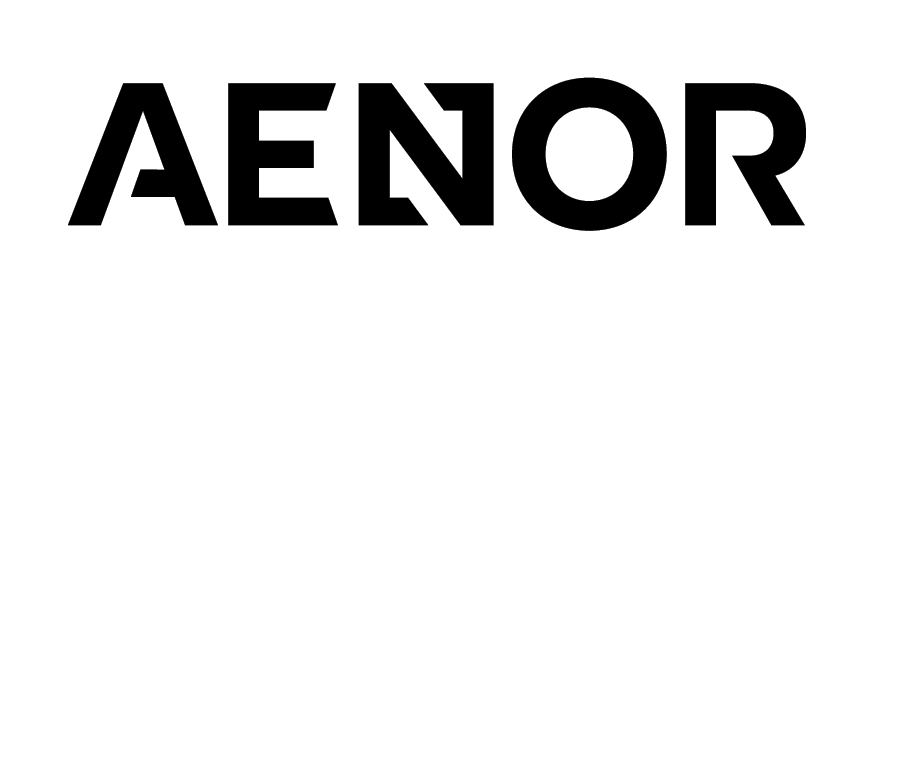If you work in sustainability or climate finance, you’ve probably been hearing more about the Taskforce on Nature-related Financial Disclosures (TNFD). Everyone agrees it’s important but what does it actually mean, and how can organizations start using it in practice?
TNFD exists to stop nature loss, a reality already reshaping business fundamentals. Water scarcity, soil degradation, and biodiversity decline are affecting costs, supply chains, and asset values. But while companies recognize the risk, many are still unsure how to turn that information into action.
That’s where TNFD’s LEAP framework comes in.
LEAP offers a structured way for organizations to face upcoming challenges. The framework allows them to - Locate, Evaluate, Assess, and Prepare - for their nature-related dependencies, impacts, and risks. It bridges the gap between acknowledging the problem and managing it responsibly.
In our recent LinkedIn post, we talked about TNFD’s new guide “Asking Better Questions on Nature.” In this blog, we'll explore how LEAP works in practice.
Nature’s limits are also financial limits.
For decades, businesses operated as if ecosystems were unlimited, externalizing the costs of resource use. But the consequences of long-term ecological exploitation are now becoming impossible to ignore. Today, pollinator decline, freshwater scarcity, and degraded soils are not just environmental concerns, they also are financial issues. They can raise costs, threaten revenues, and undermine enterprise value.
A recent study by TNFD, the University of Oxford, and Global Canopy found:
- Pollinator decline could put $577 billion of global crop production at risk every year.
- Water stress is raising operating costs for food and beverage companies by up to 30% in some regions.
- These pressures are already impacting cash flow, cost of capital, and credit quality.
The implications are clear: Nature loss hits EBITDA and the ability to manage these risks responsibly is what will determine organisations’ ability to operate safely over the long term.
What is the LEAP approach?
TNFD’s LEAP approach provides a structured process to help organizations identify, evaluate, and prepare for their nature-related dependencies, impacts, and risks.

Here’s how it works:
- Locate your interface with nature
- Map where business activities intersect with ecosystems.
- Example: identifying supply chain regions that rely on freshwater availability or healthy pollinator populations.
- Evaluate dependencies and impacts
- Assess how operations rely on natural capital, and how they affect it.
- Example: understanding how soil degradation reduces crop yields or how deforestation in sourcing regions increases supply chain vulnerability
- Assess risks and responsibilities
- Translate interactions with nature and impacts into terms relevant to governance, operational continuity, and risk management
- Example: estimating how water scarcity could affect operating costs or how ecosystem degradation could disrupt supply chains.
- Prepare to respond
- Integrate findings into governance, strategy, and disclosure
- Example: setting metrics, building resilience plans, and reporting transparently to stakeholders.
LEAP bridges the gap from science to boardroom. It’s not about monetizing nature but about understanding how your business relies on ecosystems - and how your activities affect them.
How Vizzuality helps organisations LEAP.
At Vizzuality, we see LEAP as a catalyst for better strategy. But to make it actionable, organisations need the right data and lens. Through bespoke services and our platform LandGriffon, we help companies assess their nature-related risks and impacts across global supply chains.
LandGriffon aligns with TNFD’s LEAP approach as it integrates geospatial intelligence, biodiversity data, and supply chain mapping to give decision-makers a clear view of where ecological impacts and risks lie.
In practice, this means helping companies move from blind spots to strategic insight:
- Identifying hotspots of water stress or deforestation risk in sourcing regions.
- Quantifying exposure to biodiversity loss and its potential financial impacts.
- Aligning metrics and disclosures with TNFD recommendations.
Whether you are managing capital or crops, our goal is the same: enable informed, nature-positive decisions that protect enterprise value while building long-term resilience.

From risk to resilience.
The world is entering a new financial reality: one where the consequences of long-term ecological exploitation are becoming unavoidable for businesses. Boards and investors that continue to treat biodiversity loss, water scarcity, and ecosystem collapse as side issues risk being blindsided.
The companies that will thrive are those that recognize the signal early, measure their impact, and manage their risks turning challenges into their advantage.
Now is the time to ask better questions about nature. We’re here to help you answer them.






